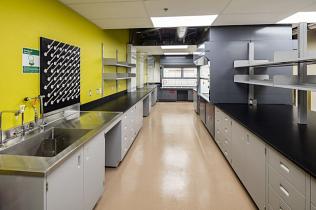Pandemic sparks increased demand for building biotech research labs
Just more than three years ago, commercial real estate developer HarveyCorp did its first conversion of an industrial warehouse in Montreal into a custom-built research laboratory for a life sciences client. The building’s floor space was outfitted with dozens of research stations connected to ample power for equipment and a high-efficiency ventilation system.
Other similar conversions from warehouse to research lab followed and the niche has now become a significant part of the company’s business, with competitors getting into the game. “The market was growing even before the pandemic, but the past year has definitely brought this industry to the forefront,” says Hugues Harvey, president of Montreal-based HarveyCorp.
The company currently has two large projects on the go, converting former light industrial warehouses in western Montreal into labs customized for contract research organizations. “We can buy empty buildings from the 1980s and 1990s and convert them into lab space in as little as six to eight months,” Mr. Harvey says.
Montreal has the country’s highest concentration of biotech research facilities, but a growing demand for lab space is a phenomenon across the country, says Jeremy Kenemy a vice-president and life sciences team lead of commercial real estate company CBRE in Montreal. Growth is also brisk in scientific and environmental support services. An example is Avi-Life Lab Inc., a recent addition to the cluster of tech companies in Saint-Laurent known as the Technoparc Montréal. Its labs offer contract analysis and testing to the food, clinical and pharmaceutical industries.
“I’ve been in this sector for 20 years and I’ve never seen more urgent interest from developers and users for sophisticated high-quality research and development laboratories,” Mr. Kenemy says. And investors are taking notice. “Part of the challenge for risk-averse landlords and investors in the past has been that they aren’t familiar with lab operations, which require considerable up-front costs to build or retrofit spaces,” he adds. But a cooling of the office and residential markets is shifting attention to investment in life sciences facilities.
Among Mr. Kenemy’s suggestions to stimulate growth of investment in research and development facilities is to set longer amortization times than for office tenants. “There may be less immediate return on their investment with the first tenant. But new market entrants who break the trail and face the biggest challenges are also setting themselves up to reap high rewards.”















